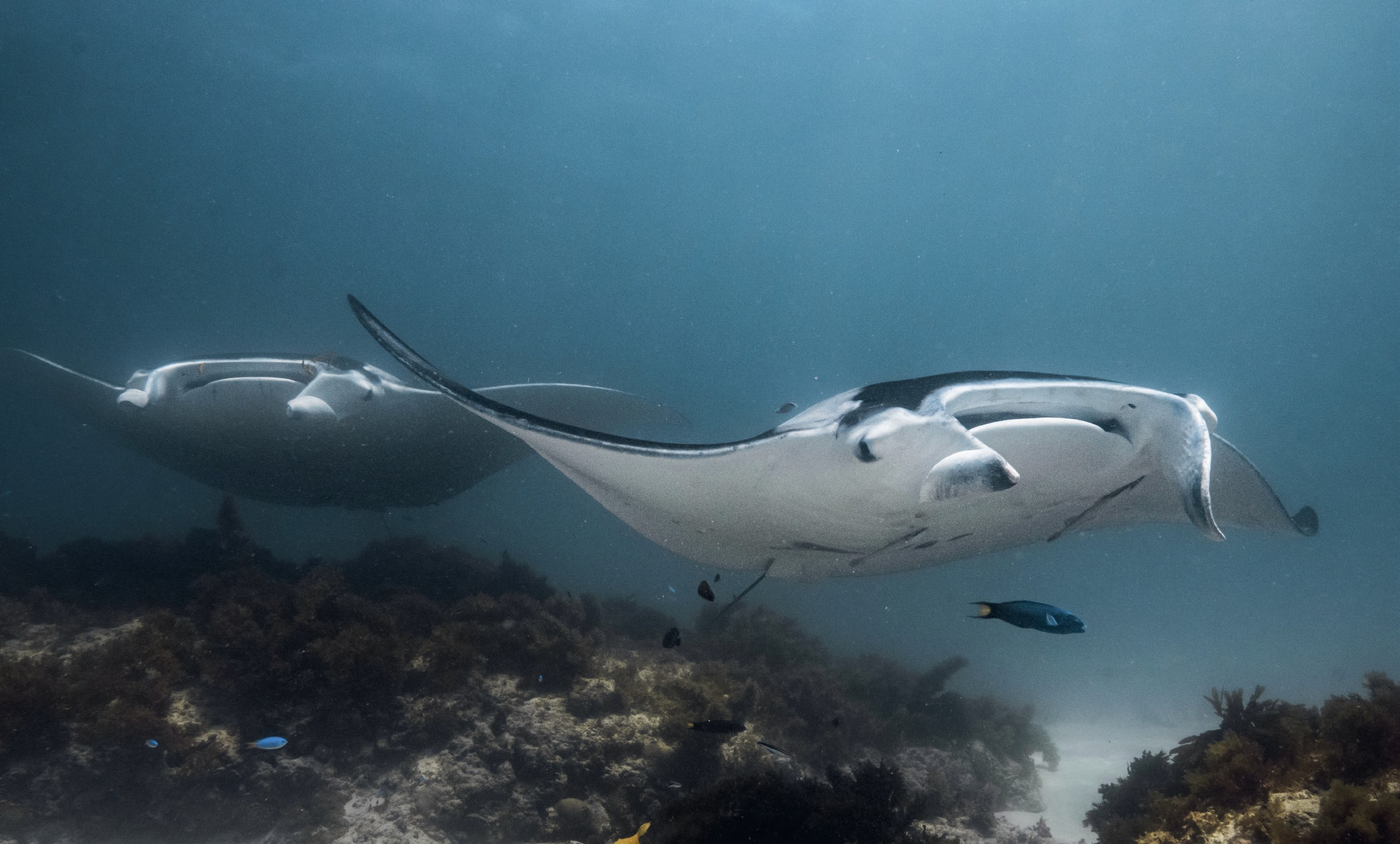
Manta rays are among the largest fish in the ocean, and by far one of the most loved among the scuba diving community. And for good reason. These intelligent, charismatic giants are curious and often approach humans underwater. They have the largest brain-to-body-weight ratio of any living fish but unlike many other shark and ray species that lead solitary lives, mantas display group behaviours, including feeding and playing. Researchers have even found evidence that they are picky about their associates.
Using the unique spot pattern on their undersides (much like a human fingerprint), scientists can identify individuals and learn more about group dynamics. Research carried out on reef manta rays (Mobula alfredi – pictured) in Indonesia’s Raja Ampat Marine Park found that certain social groups were regularly seen together at cleaning stations, where mantas are cleaned by small fish. This suggests that the rays may be using these stations as meeting points. Within these social groups, female mantas make long-term bonds with several other females, whereas males have few strong social connections.
Your organisation does not have access to this article.
Sign up today to give your students the edge they need to achieve their best grades with subject expertise
Subscribe




